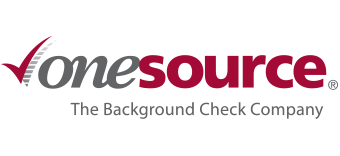The Importance of Continuous Criminal Monitoring
When onboarding new team members, your goal is threefold: keep your organization safe, verify the applicant’s professional history, and catch any criminal offenses they may have committed. Background checks can find discrepancies in the provided information, but they can become outdated quickly depending on the individual’s behavior. Even if you have a self-reporting policy for contact with law enforcement in your policy, applicants often aren’t aware or don’t follow them. For the most up-to-date information on team members, continuous monitoring is your solution.
What Is Continuous Monitoring?
Simply stated, Continuous Criminal Monitoring is a process where a Consumer Reporting Agency (CRA), such as One Source, automatically rescreens selected individuals each month for criminal activity. This is treated similarly to an initial background check, allowing organizations to view updates to specific components tied to an individual.
Why Is It important?
Organizations may utilize continuous monitoring to ensure that team members continue to meet expectations, uphold company values, and stay out of trouble with the law. You may never be aware of new charges brought against someone if you don’t check up on them on a reoccurring basis.
For example, the U.S. Department of Defense vets their personnel using a version called Trusted Workforce (TW). Established in 2018 and planned to reach full Continuous Vetting (CV) status by October 1, 2023, they have already found success in this program. As reported by the DOD, the Defense Counterintelligence and Security Agency (DCSA) was alerted to a fugitive arrest warrant the day following an incident, allowing them to apprehend the individual and revoke their security access quickly.
“If we had not had this individual enrolled in continuous vetting, there’s a high potential that we may not have been aware of the situation until the next periodic investigation, which would have been five and a half years later,” Heather Green, Assistant Director of Vetting Risk Operations for the DCSA said.
Getting Started
To ensure your organization is protected and you stay informed on team member activity, consider incorporating continuous monitoring into your background screening program. Make sure expectations are clear and state your policy plainly to allow no room for misinterpretation.
One Source can help set your organization up for success with monthly, automatic checks of the Global Report, Multi-Court Jurisdictional Database, and National Sex Offender Registry. If we find a hit, we’ll conduct a County Criminal/Statewide search to verify accuracy.
For more information on this service, or if you’d like to add it to your screening process, contact us here. We’re here to empower you to make informed decisions.
